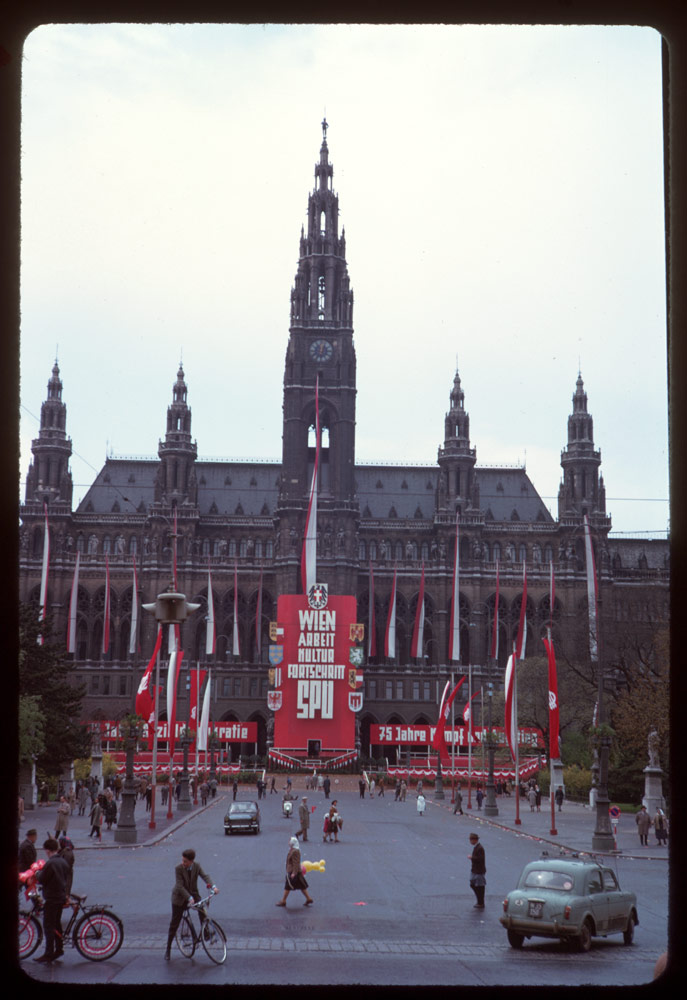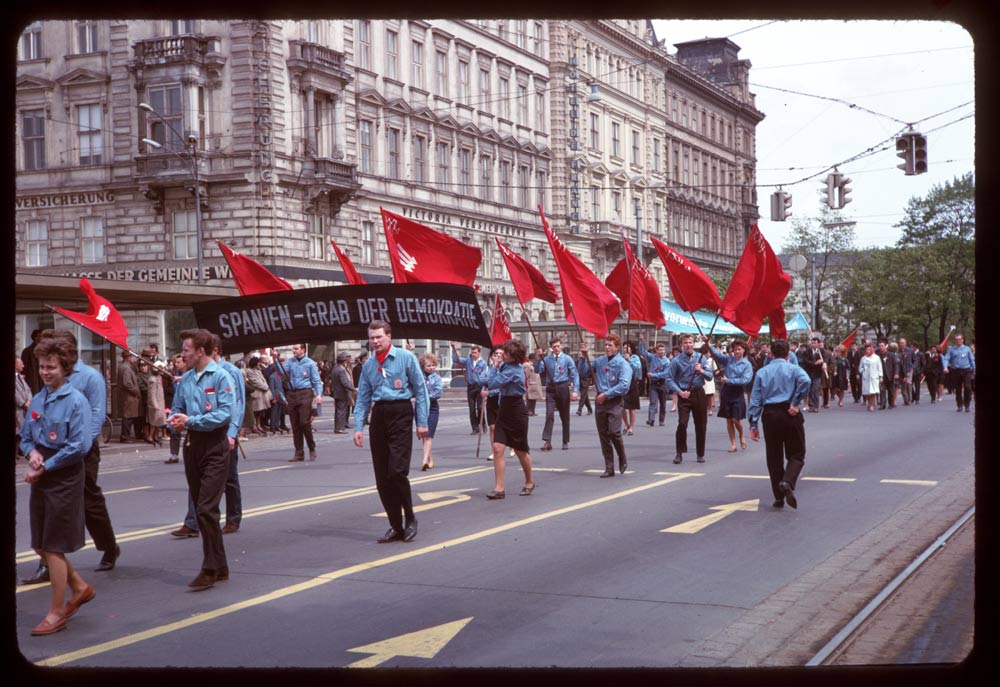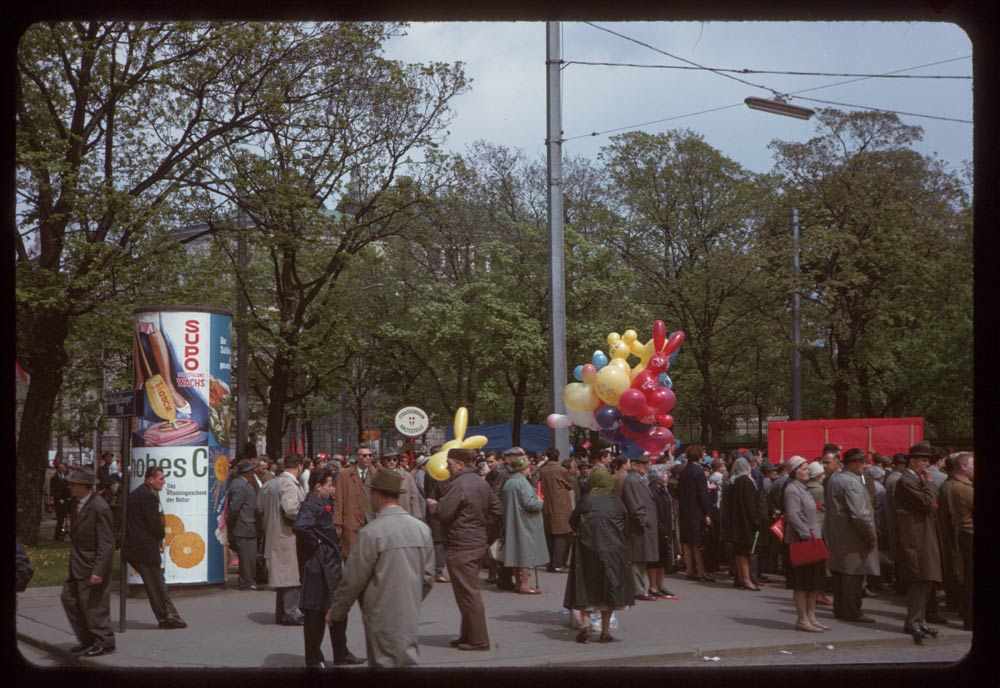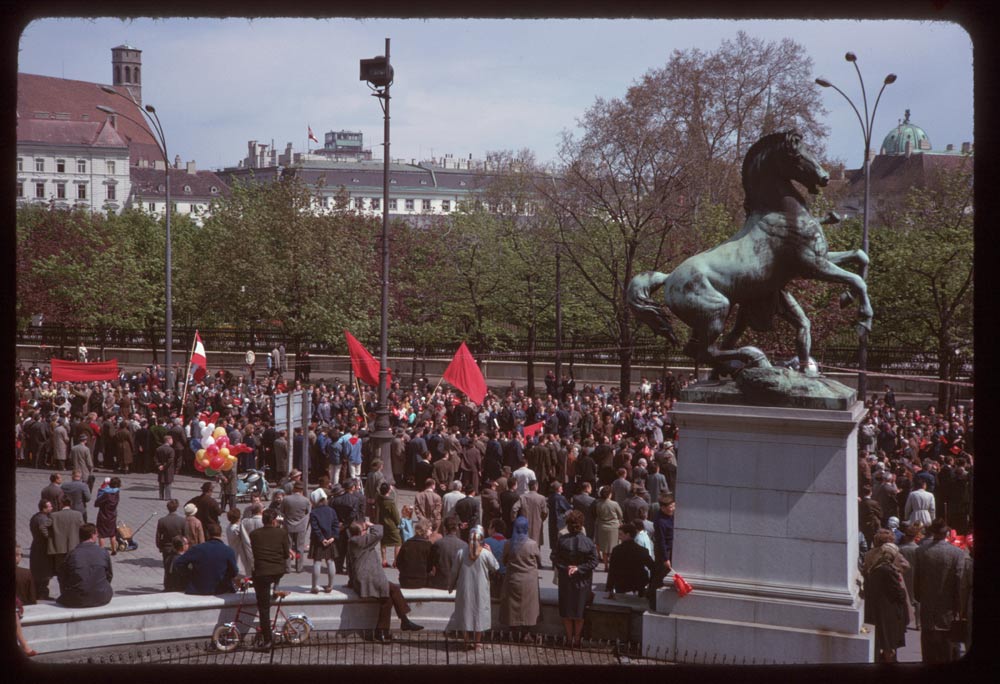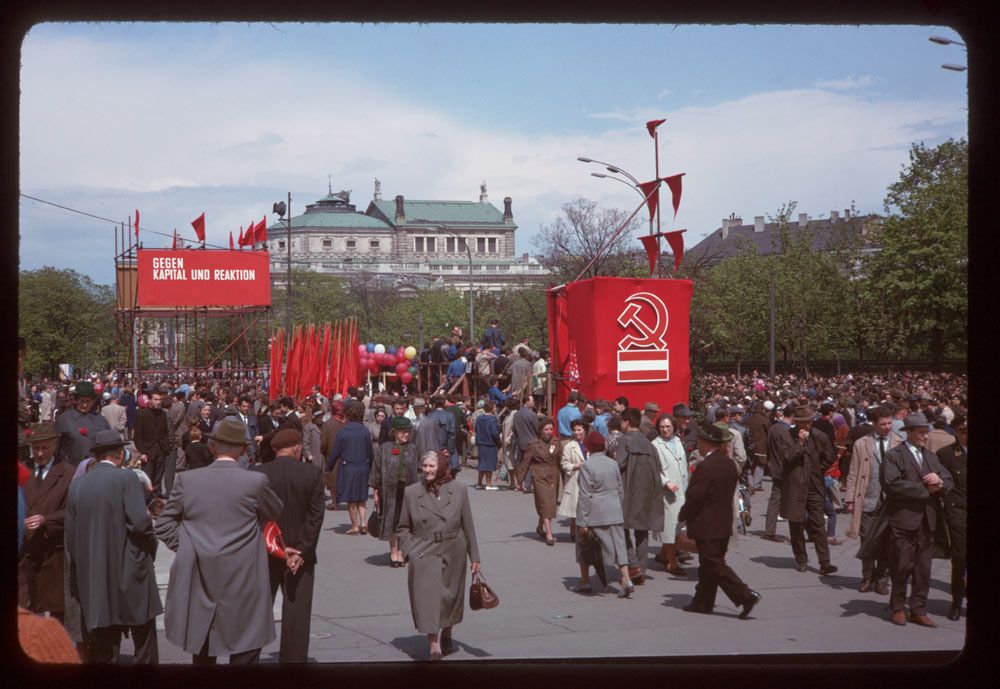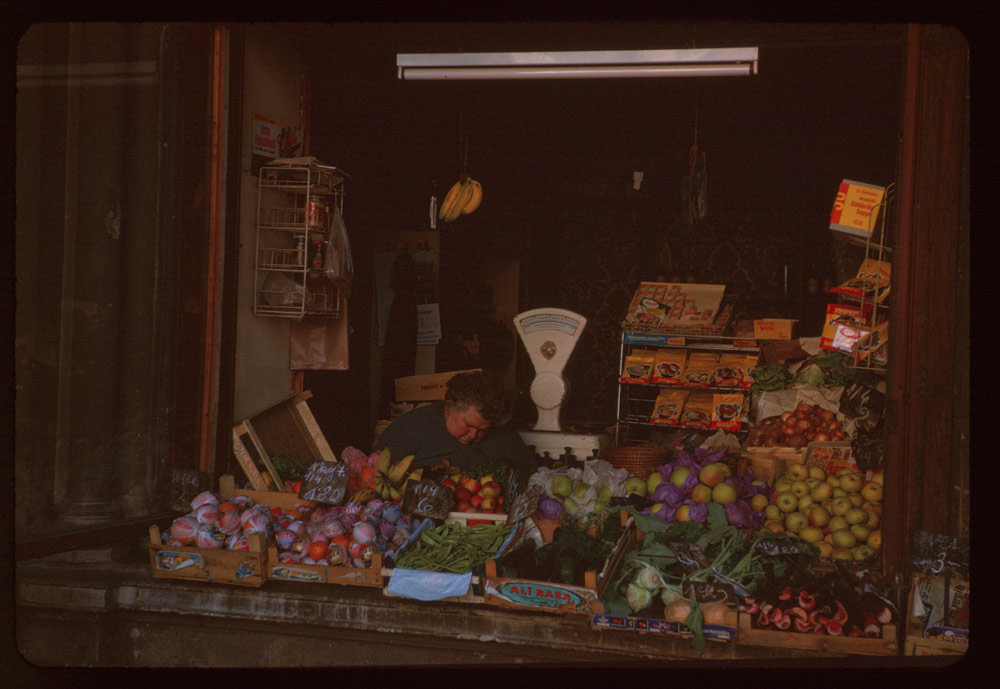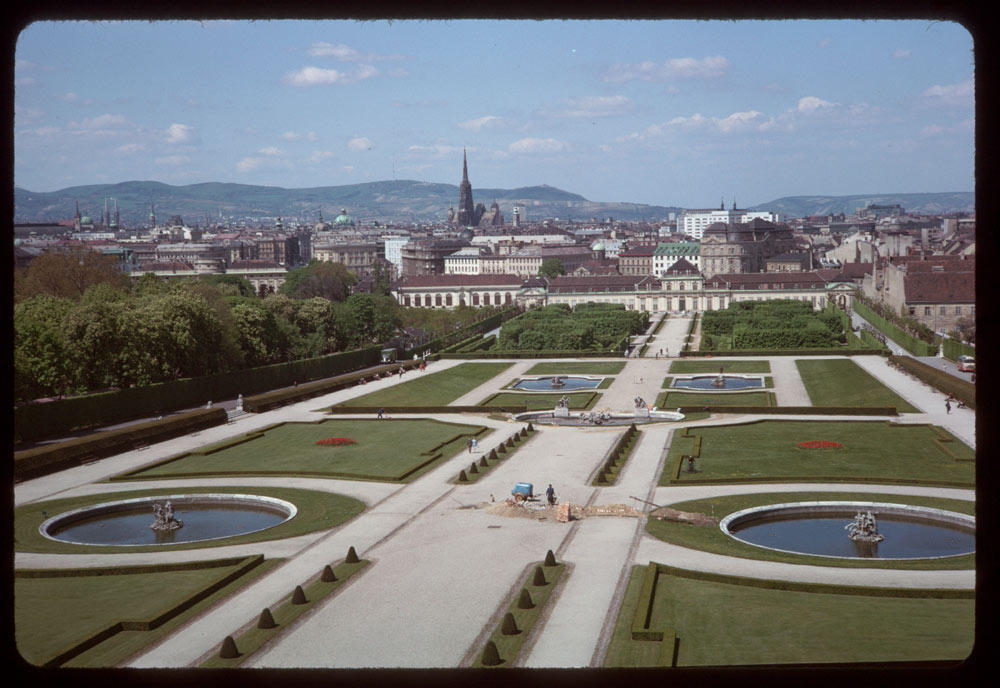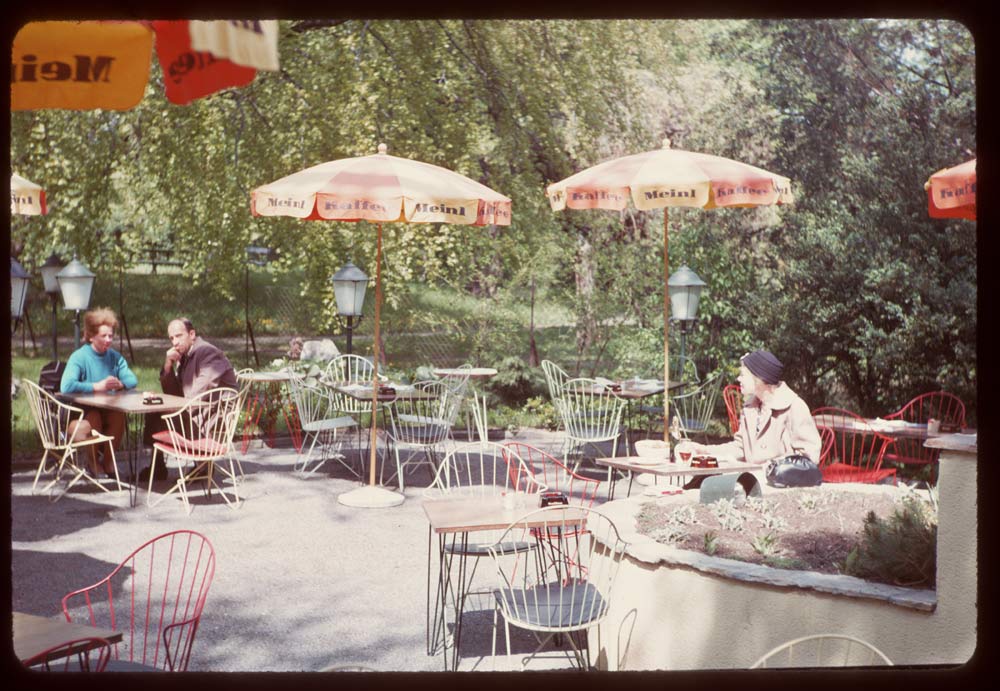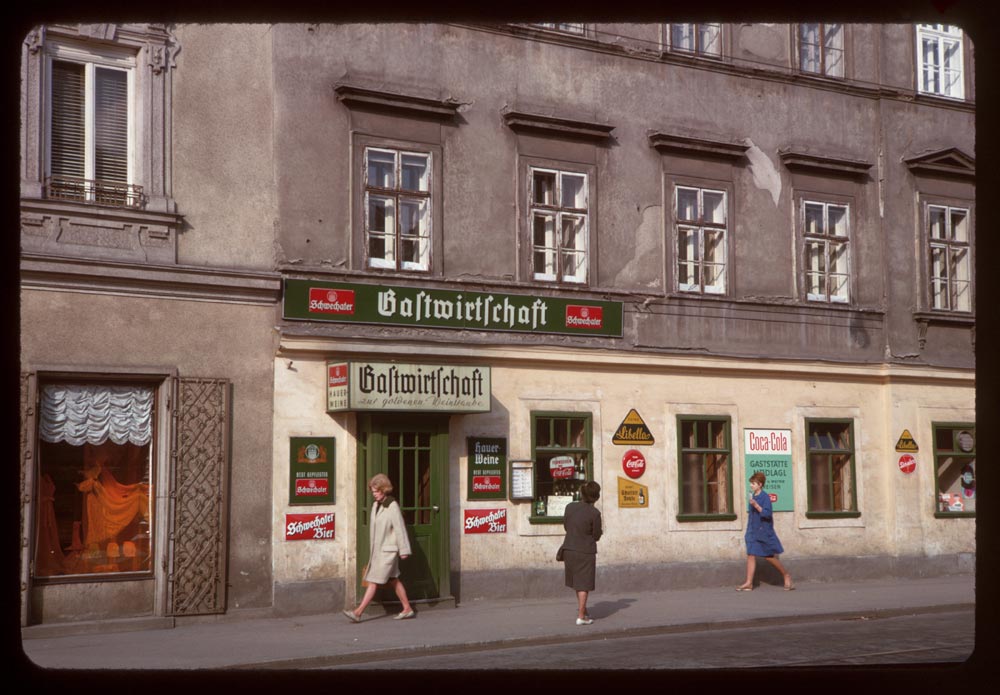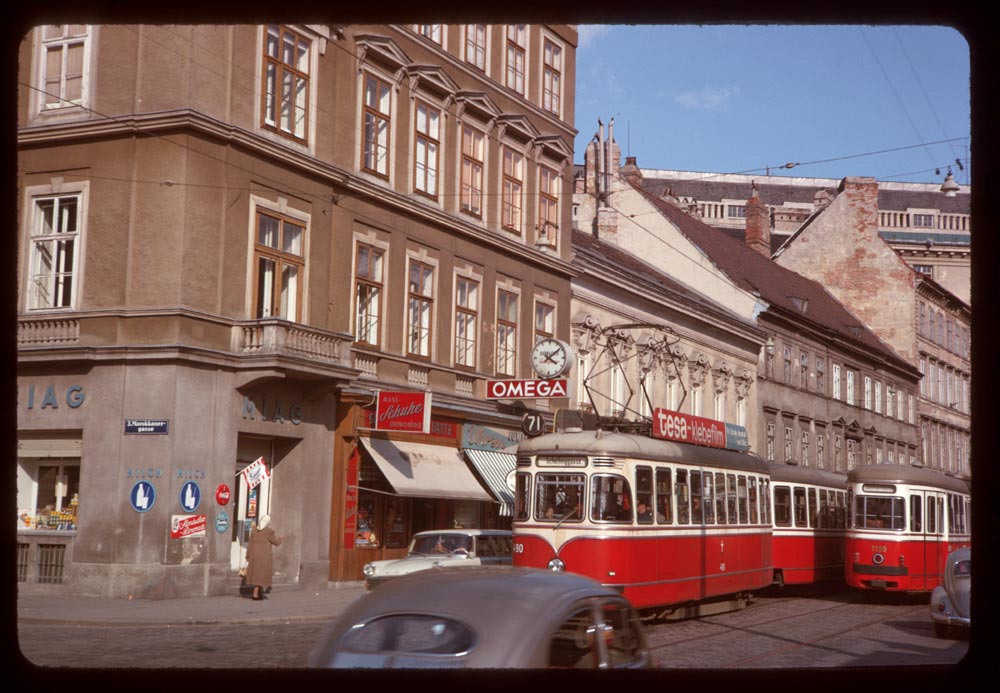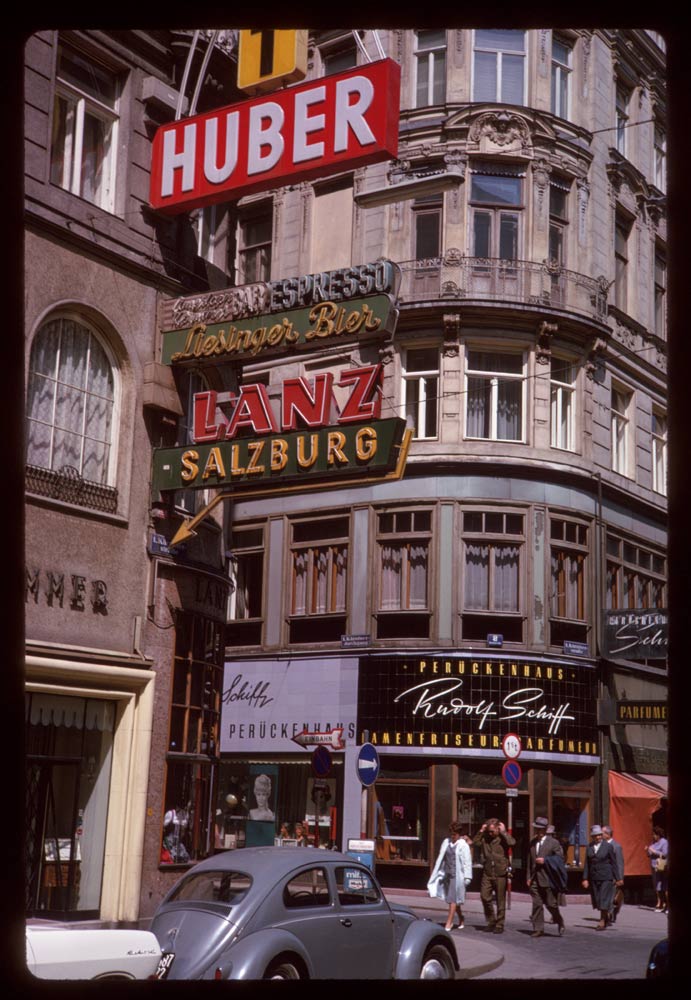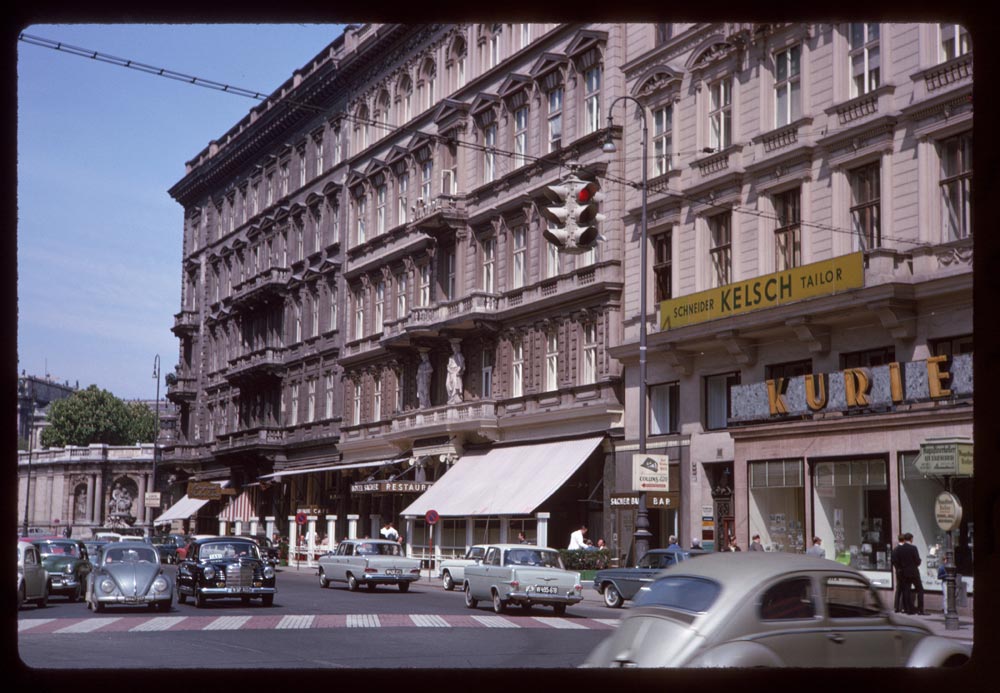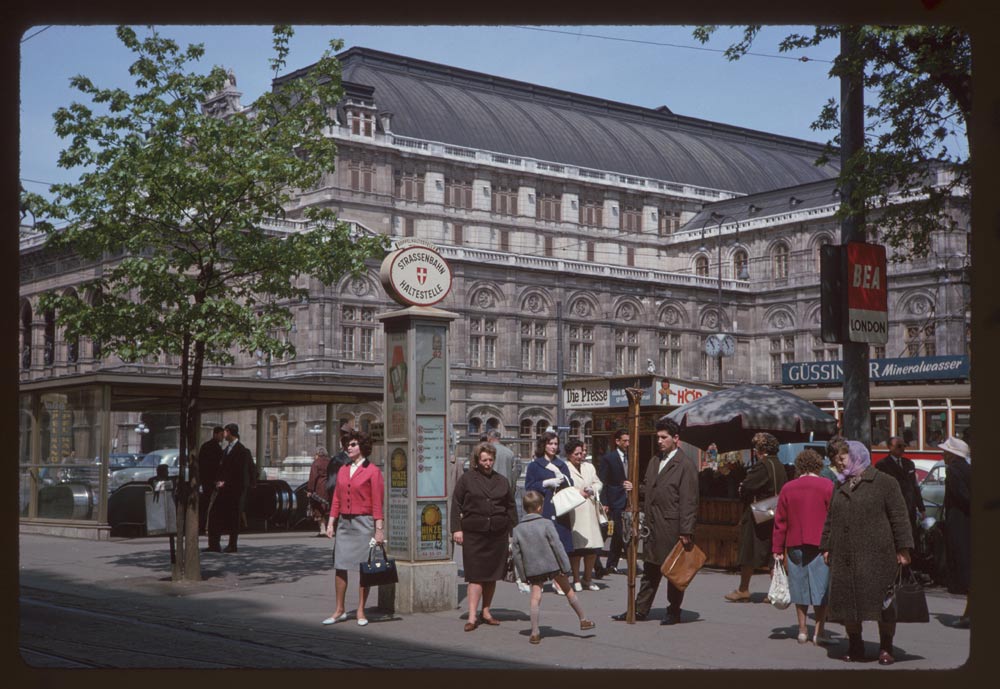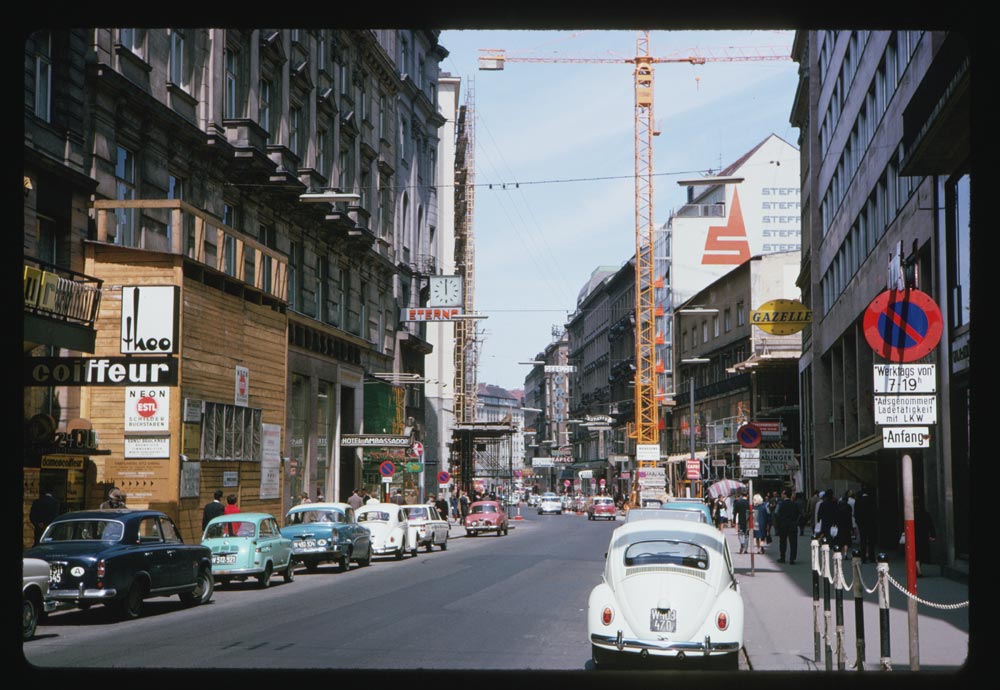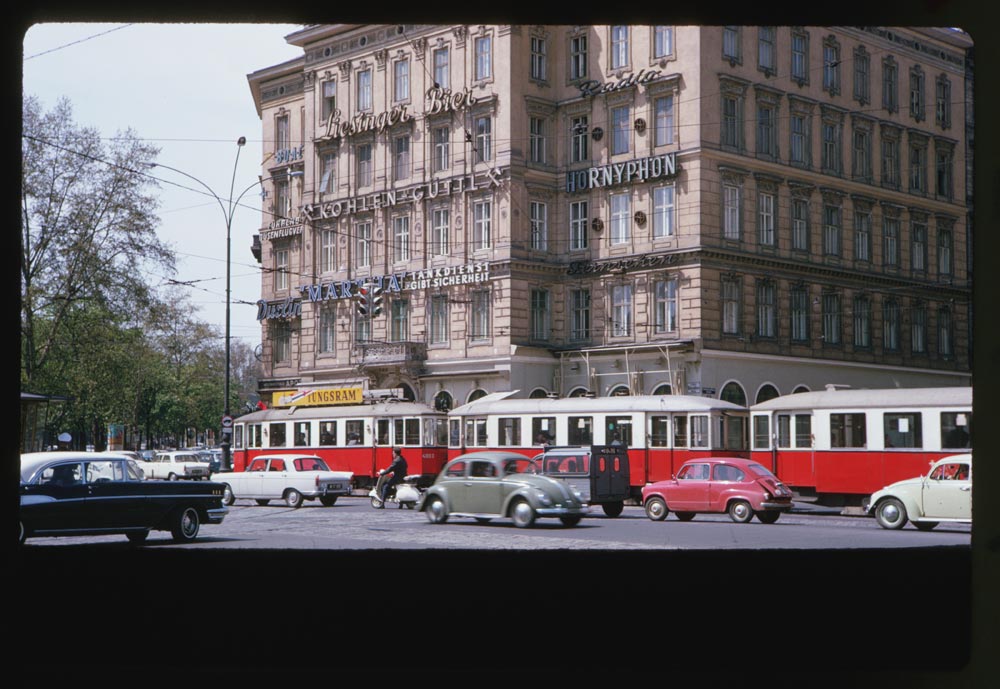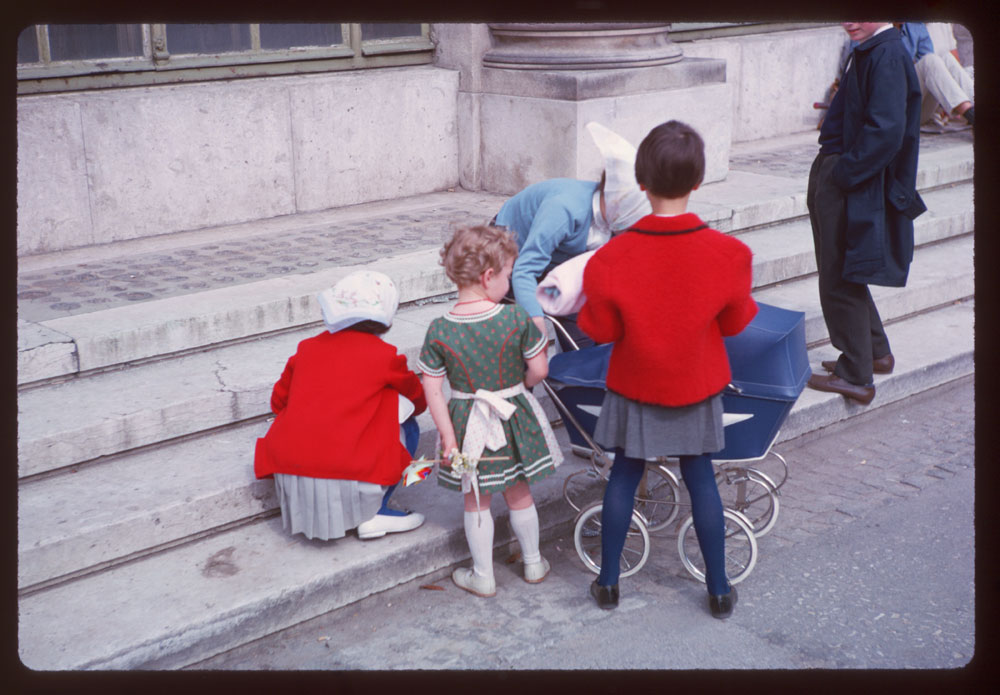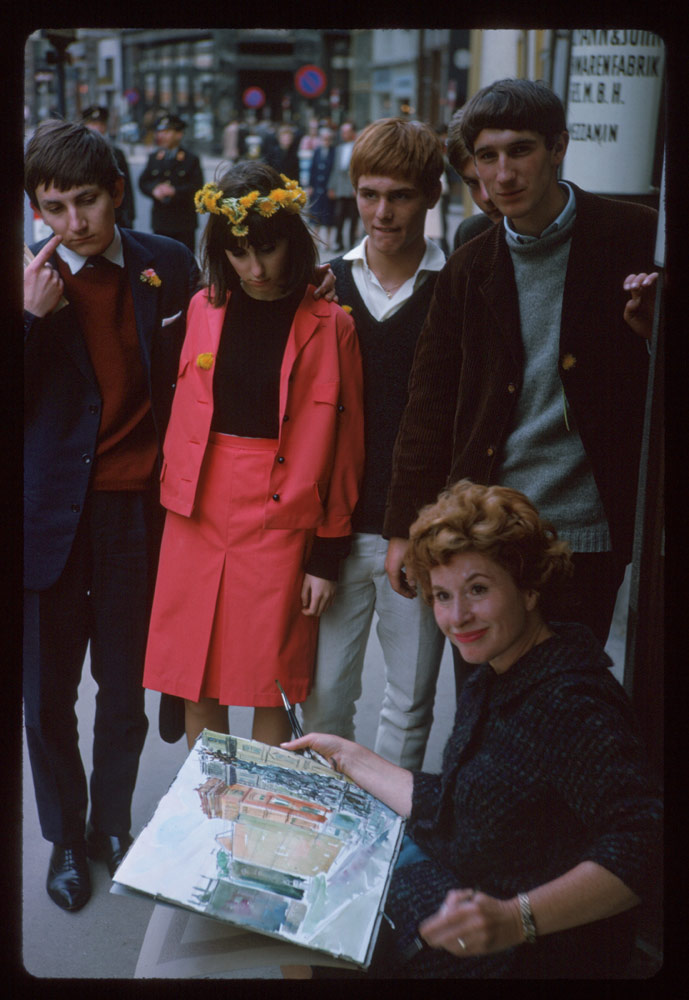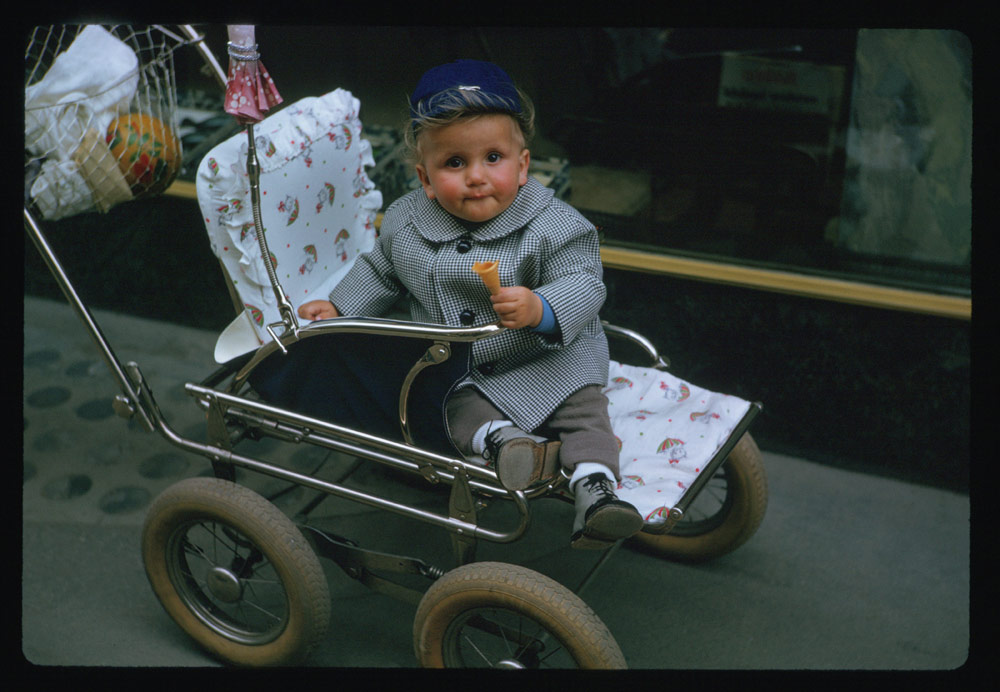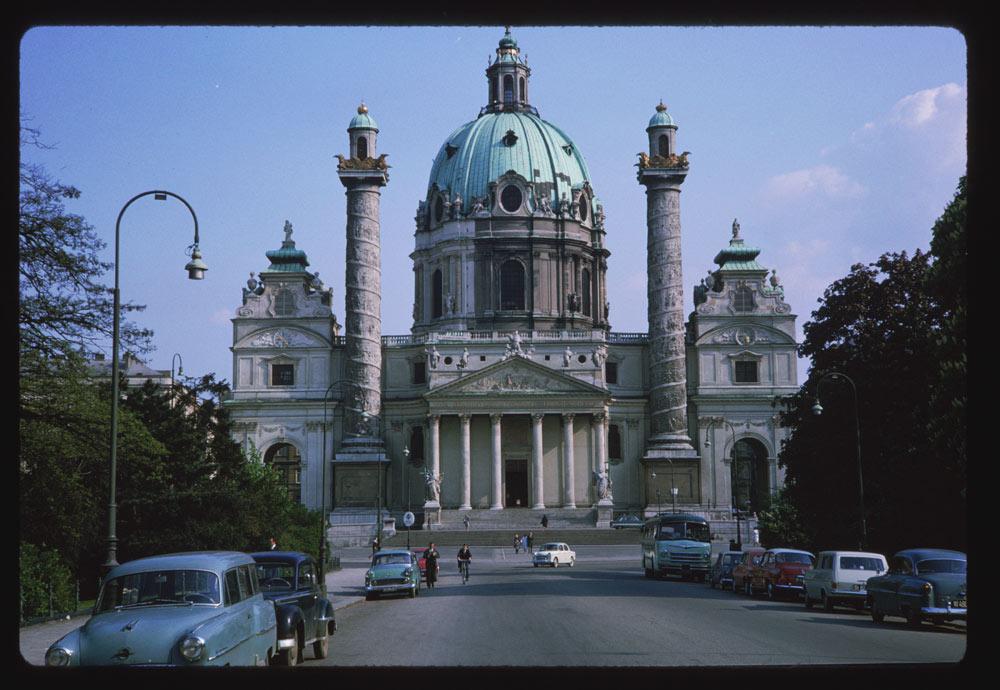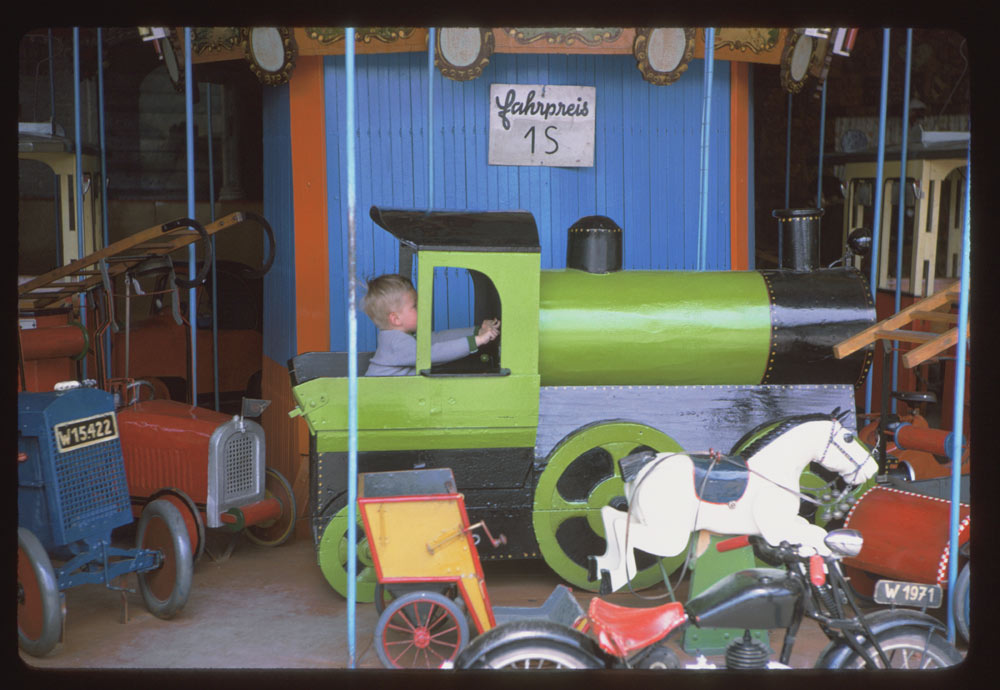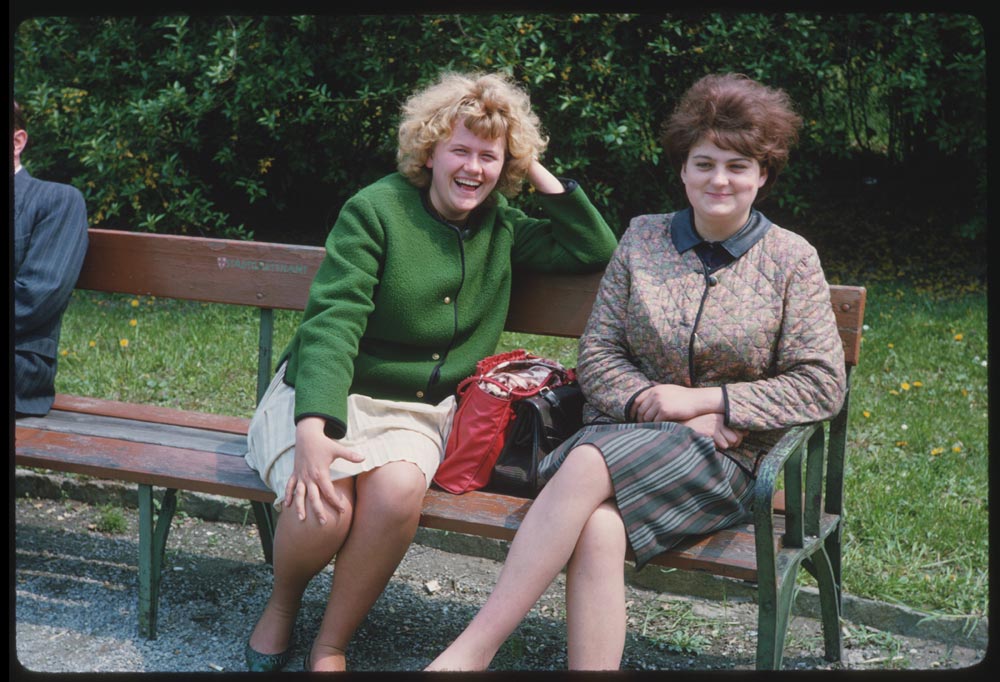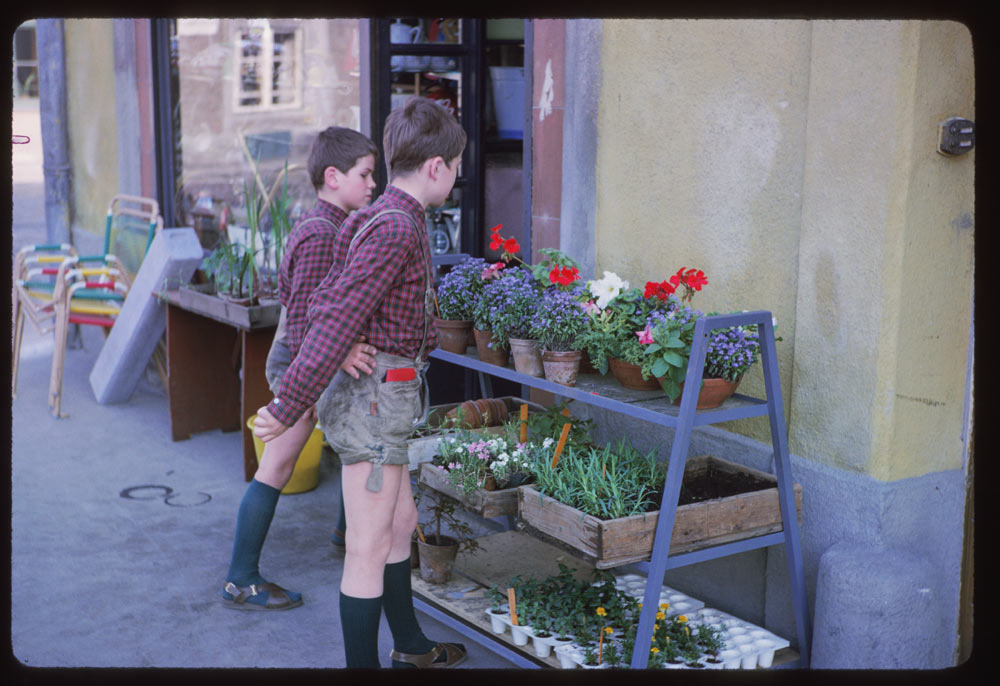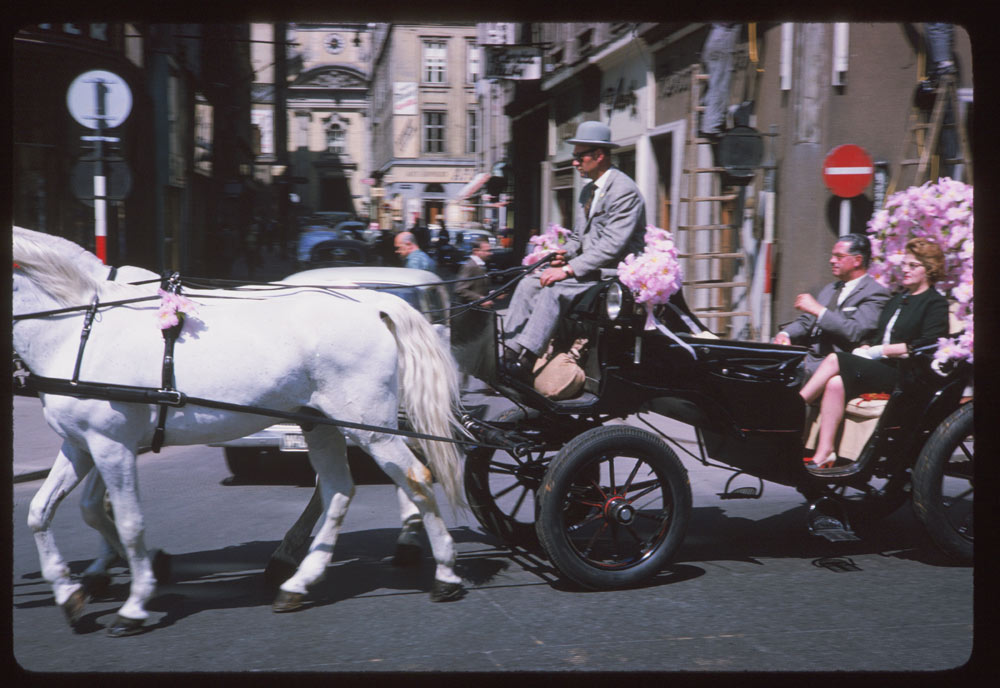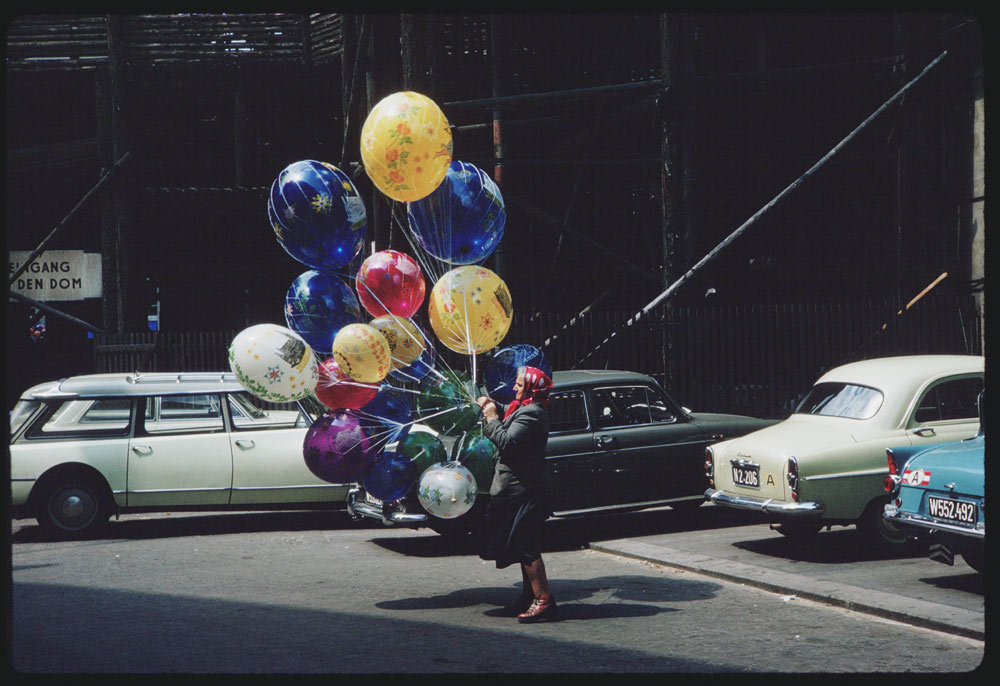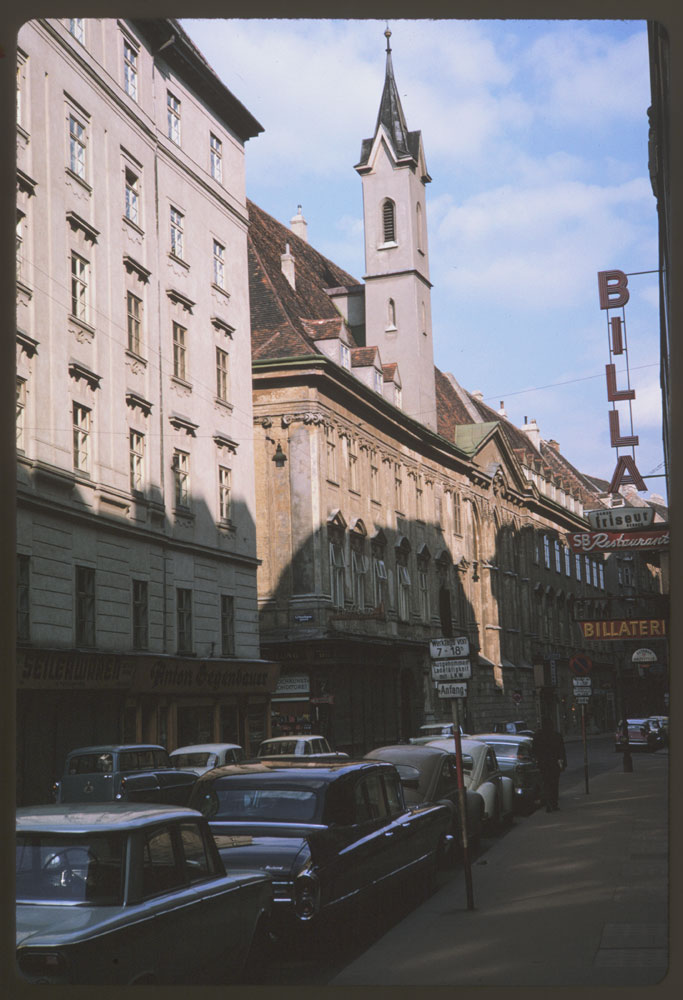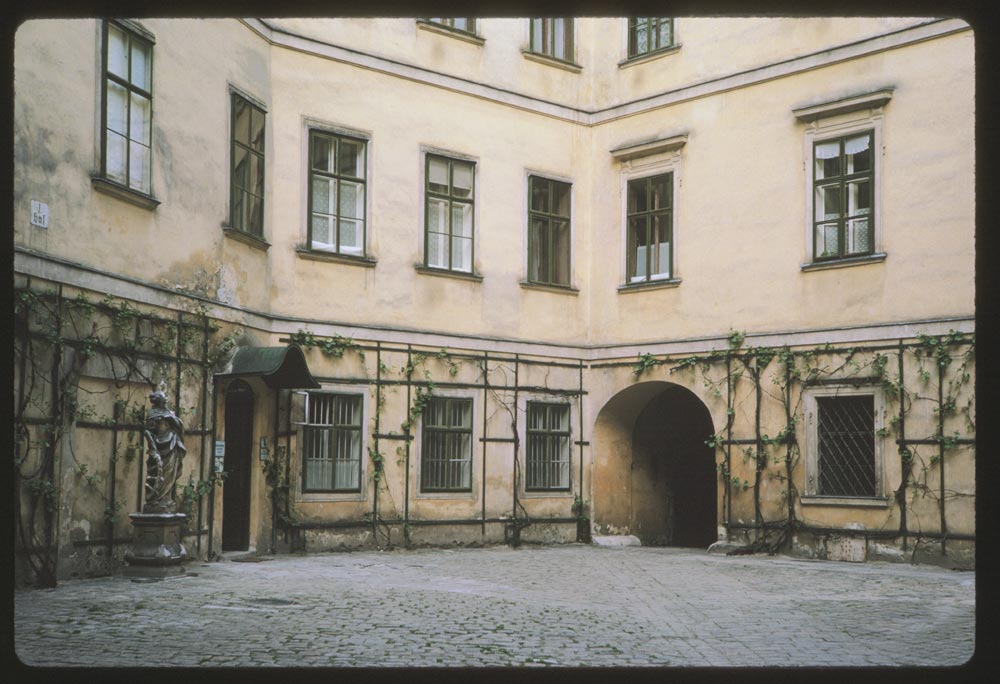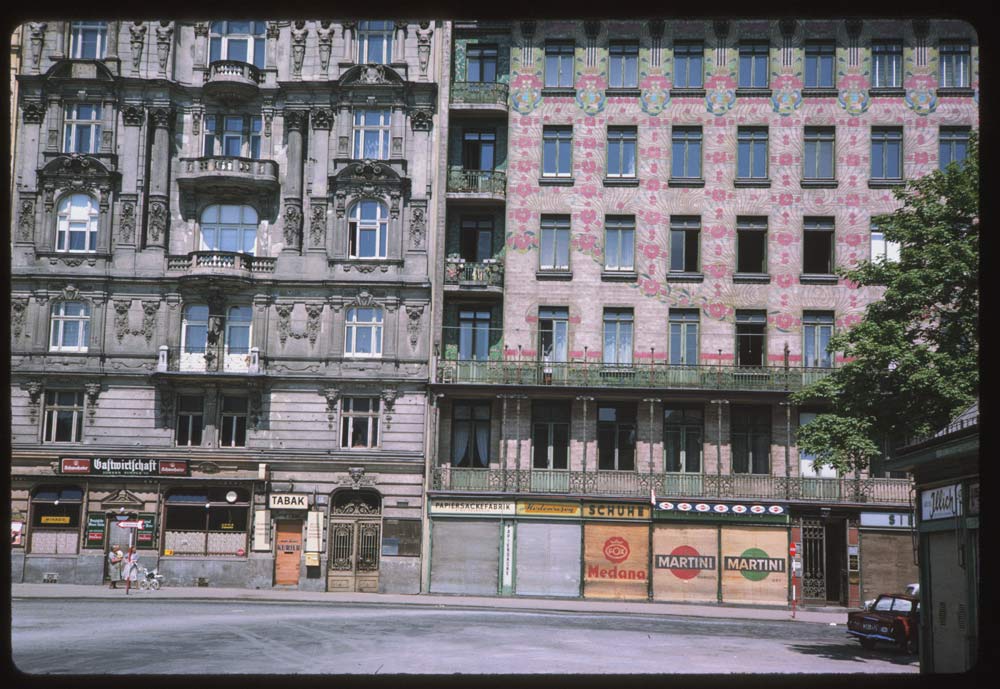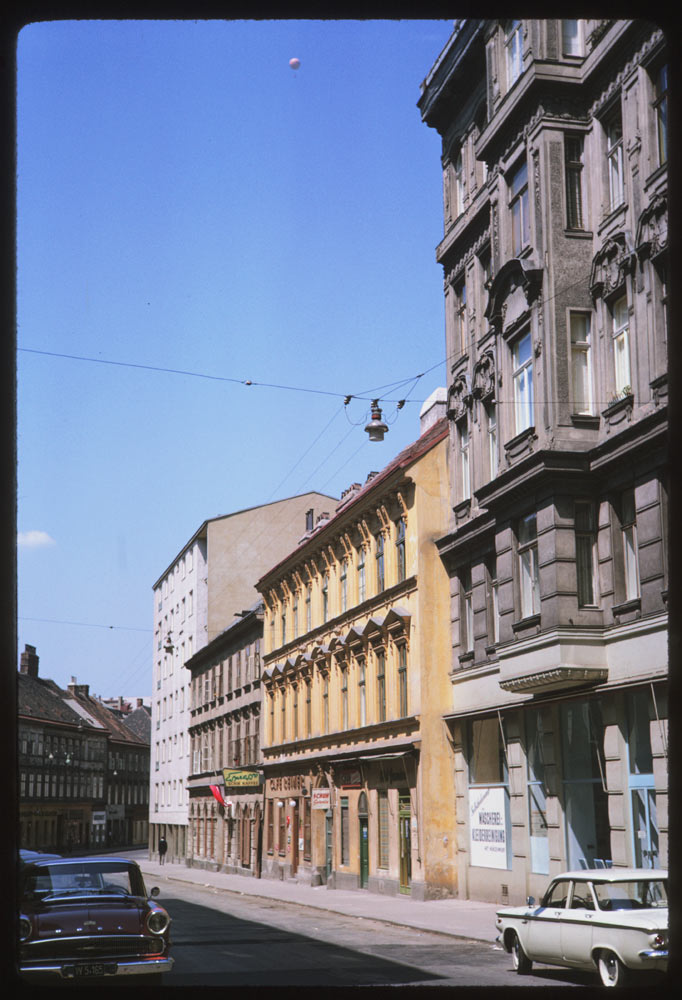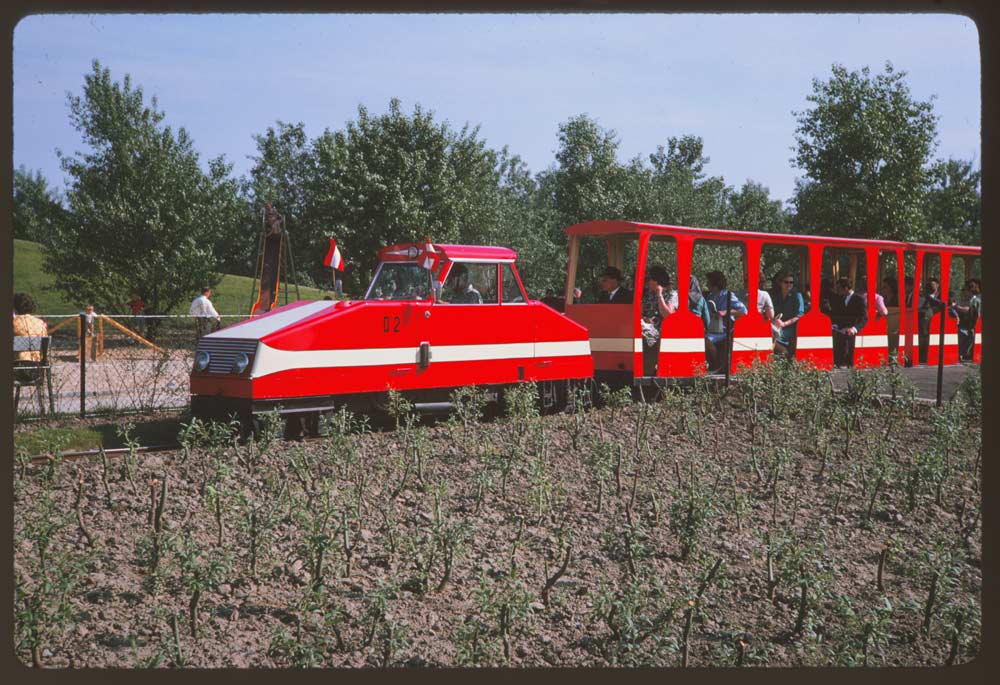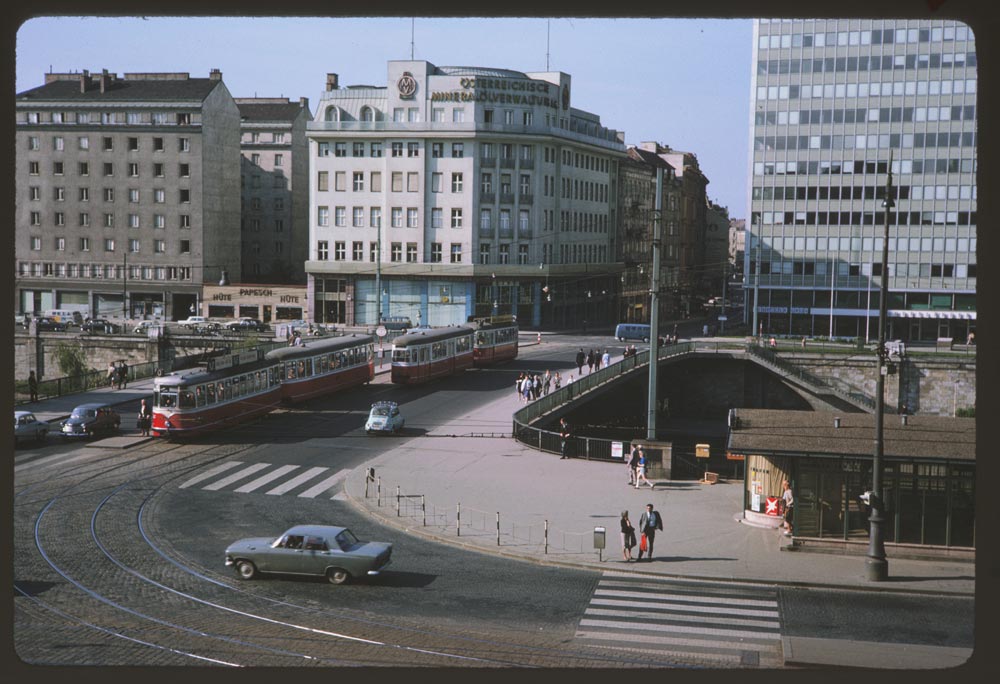By chance, I came across an image on Facebook which was taken on the day of my birth, May 7, 1964, showing shops on the busy Kärntner Straße close to my parents‘ flat in the centre of Vienna. The photographer was the American Charles W. Cushman. A quick research led me to his photo collection which, today, is part of the Indiana University Archives. The colour images taken on and around my birthday constitute a random selection with no connection to me or my family. However, it is spectacular and a wee bit haunting to view Vienna as she presented herself to the photographer who–even more eerie–during his stay in 1964 took a lot of pictures of houses and streets close to my childhood home, to former offices or in my vicinity today. The enigmatic sensation is at least partly caused by the fact how discernible, and therefore easily relatable, Vienna appears 54 years after the pictures were taken.
Here is an excerpt from the project proposal to digitizing the Charles Cushman Collection:
„The Indiana University Digital Library Program proposes digitizing and offering on the World Wide Web nearly 18,000 Kodachrome slides that comprise the majority of the lifework of Charles Weever Cushman (1896-1972), a remarkable amateur photographer. The project will accomplish two goals: first, it will preserve and digitize an astonishing collection of vernacular color photography from a time when most images were black and white; and second, the project will provide a model for building a database from which to create a finding aid. Smaller museums, historical societies, and public libraries that may own similar collections of unsorted, uncataloged materials-and have no expertise in creating electronic systems to organize them-will be able to refer to the Cushman Project model for assistance in creating a database that can be used to generate Encoded Archival Description (EAD) finding aids.
For more than fifty years, from 1917 through 1969, Mr. Cushman photographed an amazing cross section of American life. From Indiana farmlands to New York City street scenes, from the mansions of the best-known Chicago figures to the storefronts of modest shopkeepers, Mr. Cushman observed American life with a keen eye and captured it with startling immediacy in Kodachrome. His work is skillfully composed and socially revealing. Indeed, much of Cushman’s subject matter parallels that documented by the Farm Security Administration (FSA), which is now famous for its images of Depression-era farm families. Mr. Cushman’s interest in poverty, industry, urban life and other facets of the American social and economic landscape is evidenced throughout his work: his photographs demonstrate a sustained interest in themes traditionally associated with the FSA and other social documentary photography. And, because Mr. Cushman was a pioneer in the use of Kodachrome (beginning to use the film only two years after it was introduced to the market in 1936), Indiana University’s Cushman Collection is probably the most extensive color record of civilian life during the years of World War II.“
